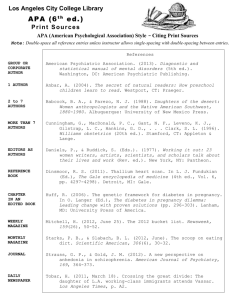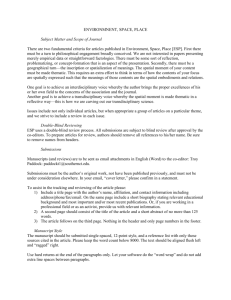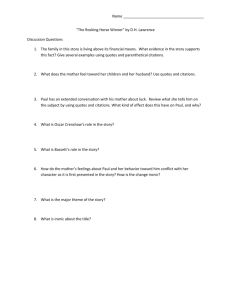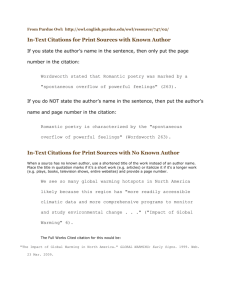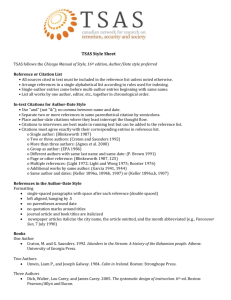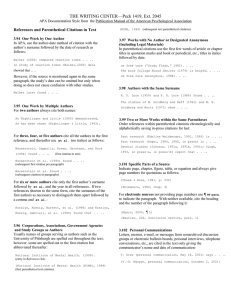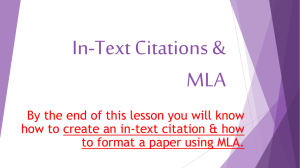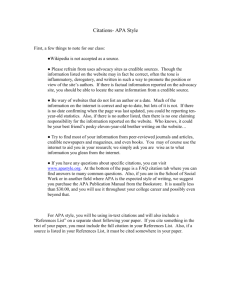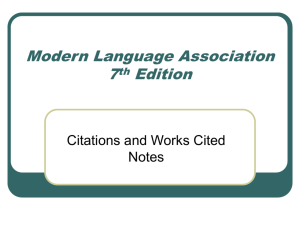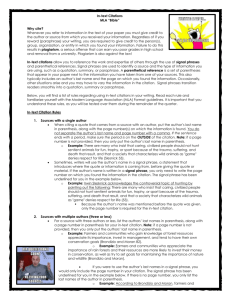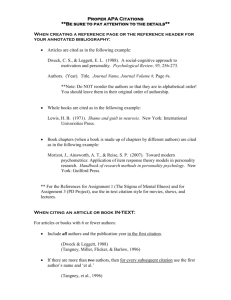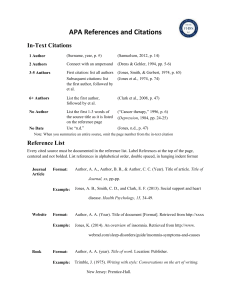American Sociological Assoc. Style Quick Reference Guide Purpose
advertisement
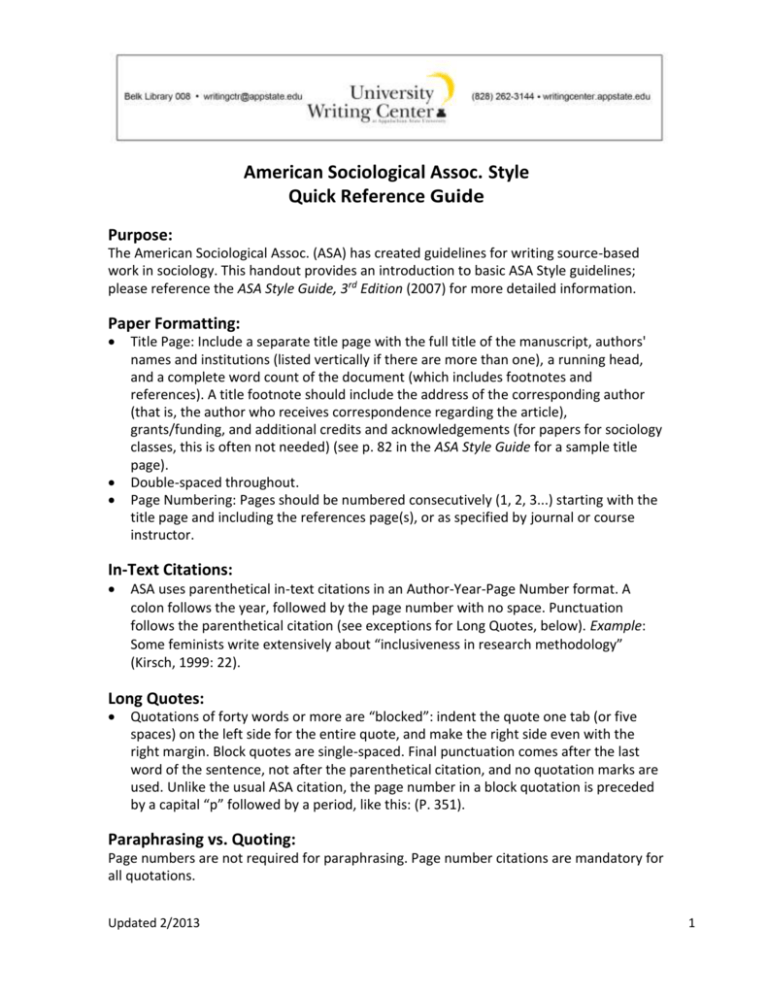
American Sociological Assoc. Style Quick Reference Guide Purpose: The American Sociological Assoc. (ASA) has created guidelines for writing source-based work in sociology. This handout provides an introduction to basic ASA Style guidelines; please reference the ASA Style Guide, 3rd Edition (2007) for more detailed information. Paper Formatting: Title Page: Include a separate title page with the full title of the manuscript, authors' names and institutions (listed vertically if there are more than one), a running head, and a complete word count of the document (which includes footnotes and references). A title footnote should include the address of the corresponding author (that is, the author who receives correspondence regarding the article), grants/funding, and additional credits and acknowledgements (for papers for sociology classes, this is often not needed) (see p. 82 in the ASA Style Guide for a sample title page). Double-spaced throughout. Page Numbering: Pages should be numbered consecutively (1, 2, 3...) starting with the title page and including the references page(s), or as specified by journal or course instructor. In-Text Citations: ASA uses parenthetical in-text citations in an Author-Year-Page Number format. A colon follows the year, followed by the page number with no space. Punctuation follows the parenthetical citation (see exceptions for Long Quotes, below). Example: Some feminists write extensively about “inclusiveness in research methodology” (Kirsch, 1999: 22). Long Quotes: Quotations of forty words or more are “blocked”: indent the quote one tab (or five spaces) on the left side for the entire quote, and make the right side even with the right margin. Block quotes are single-spaced. Final punctuation comes after the last word of the sentence, not after the parenthetical citation, and no quotation marks are used. Unlike the usual ASA citation, the page number in a block quotation is preceded by a capital “p” followed by a period, like this: (P. 351). Paraphrasing vs. Quoting: Page numbers are not required for paraphrasing. Page number citations are mandatory for all quotations. Updated 2/2013 1 End of Text Citations: A References page is included at the end of the text, arranged alphabetically by authors’ last names or the titles of works if there is no author listed. Only works that are directly cited in-text are included. The word “References” should be centered at the top of this page; do not use underlining, italics, bold face, or quotation marks. All references should be doublespaced and use a hanging indent. Use title case for all titles: capitalize all words except prepositions (such as of, between, through), articles (such as a, the, and an), and conjunctions (such as but, and, or) However, capitalize them if they begin the title or the subtitle. Entries on the References page are arranged by author’s last name, then first name and middle initial (if any), separated by a comma. For multiple authorship, invert only the first author’s name. Example: Jones, Arthur B., Colin D. Smith, and James Petersen. If a work has no specific authors, alphabetize by title of the work. Example: “No Child Left Behind” Citation Formula for References Page: The example below shows the different parts of an entry on the References page, using the example of a journal article from an online database. Descriptions of the various parts are shown beneath the example. Scott, Lionel D., Jr., Lauren E. House, and John D. Smith. 2005. “Relationship of Distress and Perceived Control to Coping with Perceived Racial Discrimination among Black Youth.” Journal of Black Psychology 31(3):254-72 (Retrieved from JSTOR on December 16, 2006.) 1) Author and year of publication: Notice that full first and last names of authors are used, but only the first author’s name is reversed. For more than two authors, separate with commas. Year of publication follows the authors’ names, followed by a period. 2) Title of journal article: Enclosed in quotation marks. Follow capitalization rules discussed above in “End of Text Citations.” 3) Journal title, Issue, Volume: Italicized journal title with volume number immediately following (no comma), and issue number in parentheses (if available). A colon follows the volume/issue number, followed by page numbers (no space, and no “p” for page number). 4) Database source: Shown in parentheses, preceded by “Retrieved from.” Online database name (JSTOR) is not in italics or bold. Date of retrieval is written in Month, Day, Year format, as shown. Updated 2/2013 2
